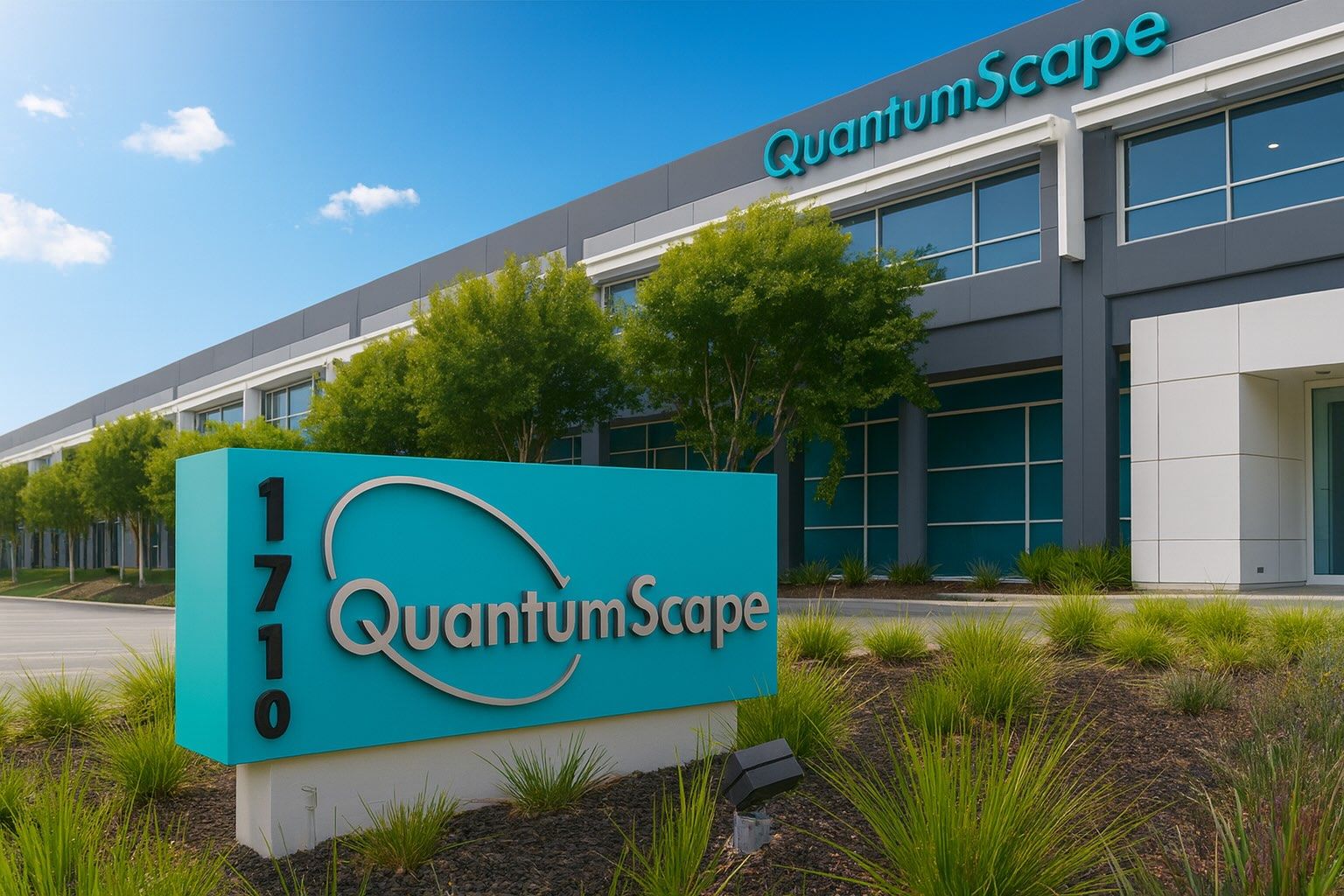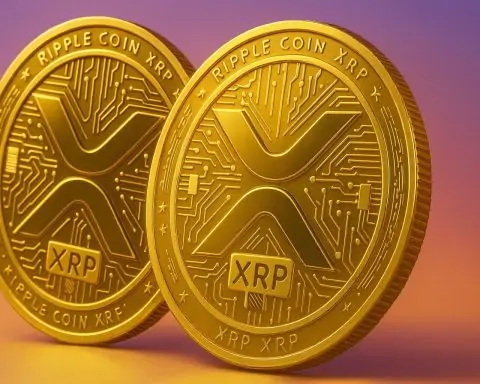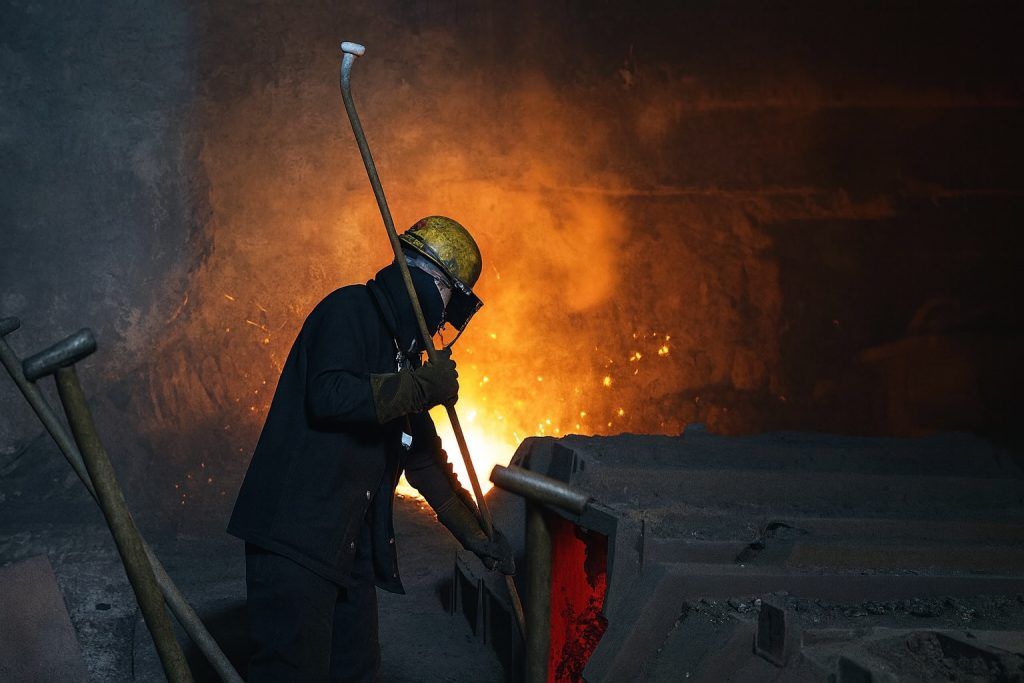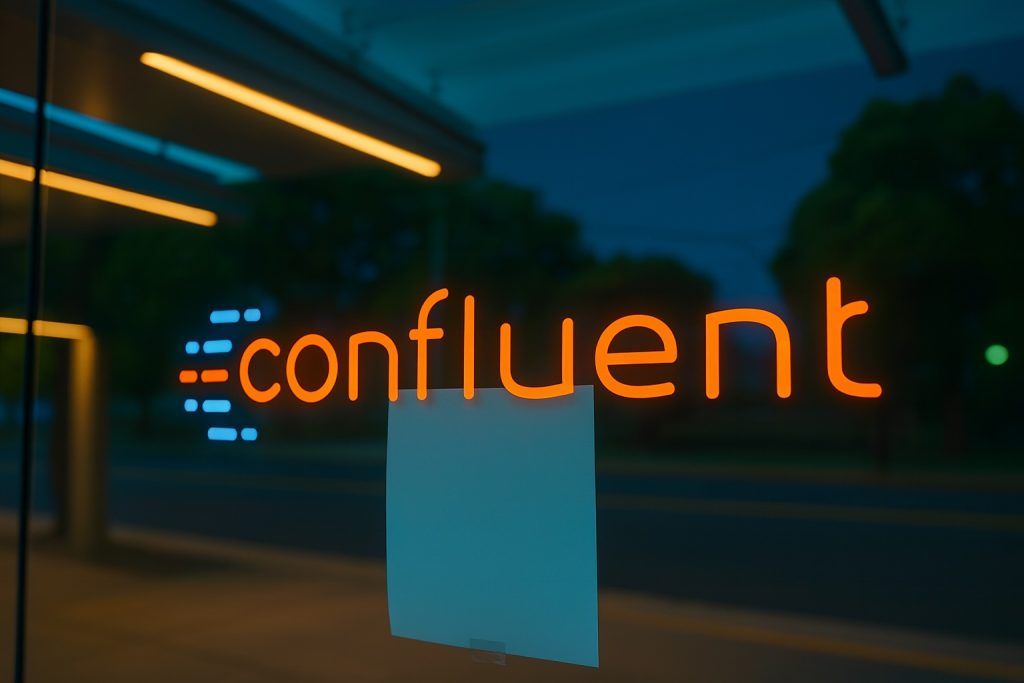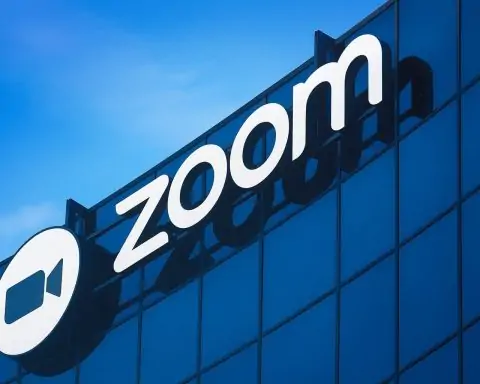- Stock Skyrockets: QuantumScape (NYSE: QS) shares have surged to around $16 as of early October 2025 – near a 52-week high – after a flurry of positive developments [1]. The stock closed at $15.92 on Oct 3 (up 11% that day) and has now gained roughly +170% year-to-date [2].
- New Partnership Fueling Rally: On Sept 30, QuantumScape announced a strategic partnership with Corning Inc. to co-develop its ceramic solid-state battery separators [3]. Analysts called the deal “a major vote of confidence” in QuantumScape’s technology [4], as Corning’s expertise in glass/ceramics could speed up mass production of QS’s batteries.
- Battery Breakthroughs on Display: At the Munich auto show in early Sept, Volkswagen’s Ducati e-motorcycleprototype using QuantumScape’s latest cells demonstrated 844 Wh/L energy density and charging from 10% to 80% in ~12 minutes [5]. This real-world demo – the first public vehicle test of QS’s battery – showcased its fast-charge and high-capacity potential, bolstering credibility [6]. VW (a major QS investor) also boosted its commitment this year with an extra $131 million investment to accelerate QS’s pilot line [7].
- Sector-Wide EV Battery Buzz: QuantumScape’s news has lifted the whole solid-state battery sector. Rival Solid Power (SLDP) jumped ~7% to $4+ and SES AI (SES) spiked ~17% to $2+ on Oct 3 in sympathy [8]. Global battery leaders are in the race too – e.g. Toyota aims to commercialize solid-state batteries by 2027–28, Nissan by 2029, and startups like Solid Power and SES are delivering prototypes – underscoring the intensifying competitionin next-gen batteries [9] [10].
- Analysts Urge Caution: Despite the excitement, Wall Street remains skeptical of QS’s valuation. Most analysts rate the stock “Sell” or “Hold” with an average 12-month price target of only $5–$6 [11] – ~60% below current levels. They warn QuantumScape’s $9+ billion market cap is built on future promise (the company has no product revenue yet) and that it must prove its technology at scale to justify the hype [12] [13].
QuantumScape’s Recent Surge – News Sparks a Rally
QuantumScape’s stock went into “blast-off” mode at the start of October 2025 following a series of positive announcements. After trading flat around $12–$13 through mid-September, QS broke out sharply on the news. It jumped 18% on Sept 18, then another +18.4% on Oct 1, hitting an intraday high of $16.49 by Oct 3 (just above its prior 52-week peak) [14]. The stock closed Oct 3 at $15.92 – capping a roughly 30% gain in one week and nearly +172% year-to-date performance [15]. This breathtaking rally far outpaced the broader market and made QS one of 2025’s top tech stock movers.
What drove the surge? Several late-September catalysts converged:
- Landmark Corning Partnership (Sept 30): QuantumScape announced a new collaboration with Corning Inc., a world leader in ceramics and glass. The two companies will jointly develop high-volume manufacturing for QS’s ceramic battery separator – the thin solid electrolyte layer at the core of its batteries [16] [17]. Partnering with a materials giant like Corning was seen as a strong external validation of QuantumScape’s tech. Industry analysts hailed it as an “important step” toward industrialization, noting it leverages Corning’s expertise to help QS scale up production [18] [19]. Investors cheered the news: the morning after the announcement, QS stock gapped ~15% higher and kept climbing [20]. (Notably, QS had inked a similar ceramic separator deal earlier in 2025 with Japan’s Murata Manufacturing, so the Corning tie-up further expands its partner network [21].)QuantumScape’s CEO Dr. Siva Sivaram said “Corning’s world-class capabilities in ceramics…[make] it an ideal addition” to their ecosystem, underscoring that QS is “building the foundation for scalable production” of its solid-state batteries [22].
- Real-World Battery Demo at IAA Munich: Skeptics have long waited to see QS’s lab breakthroughs perform in an actual vehicle – and they got a glimpse in early September. At the IAA Mobility show in Germany, Volkswagen’s battery division (PowerCo) showcased a Ducati electric racing motorcycle powered by QuantumScape’s latest prototype cells [23]. The demo delivered impressive results: the bike’s battery achieved ~844 Wh/L energy density (far above typical EV batteries today) and charged from 10% to 80% in only ~12 minutes [24]. This marked the first public field test of QuantumScape’s batteries in a vehicle, helping convince doubters that QS’s technology works not just in the lab but in real-world conditions. Volkswagen – QuantumScape’s largest backer – appears pleased as well: in July, VW’s PowerCo unit agreed to invest an additional $131 million (milestone-based) to support QS’s pilot production line [25]. QuantumScape also quietly signed a new joint-development agreement with another major (unnamed) automaker in Q2’25 [26], suggesting multiple OEMs are now actively interested in its batteries. These developments reinforced that major EV players are lining up behind QuantumScape, boosting investor confidence.
- U.S. Government Lithium Boost: A more indirect catalyst came from Washington. In late September, the U.S. government announced plans to take a 5% stake in Lithium Americas and its large Nevada lithium mine to bolster domestic lithium supply [27]. This move sent ripples through the EV battery industry. With QuantumScape’s cells relying on lithium-metal, the prospect of a secure local lithium supply (less dependence on China) was a bullish macro signal. Battery stocks jumped on the news – traders bid up QS on the idea that cheaper, locally sourced lithium could eventually lower its material costs and smooth its path to commercialization [28] [29]. In essence, government support for critical minerals added fuel to the fire already under QS’s stock.
- Tesla Tie-Up Rumors: Amid the frenzy, speculation even swirled that Tesla might have its eye on QuantumScape. In an interview, QS’s CEO noted Tesla has its own solid-state battery patents, which fanned rumors of a possible Tesla-QuantumScape collaboration or buyout [30]. There’s no confirmation from either company, and Tesla typically develops battery tech in-house – but just the hint of Tesla’s name being in the mix injected some meme-stock energy into QS shares [31]. The episode illustrated the heightened sentiment: QuantumScape’s narrative had become so hot that even unsubstantiated “what if” scenarios (Tesla interest) were enough to excite traders further.
All told, these catalysts created a perfect storm of optimism driving QuantumScape’s stock higher. Trading volumes spiked into the tens of millions of shares per day [32] as momentum players piled in. Once QS broke through technical resistance around $14–$15, it triggered a wave of buying that propelled the stock into the mid-$16s [33]. Chart analysts noted a bullish breakout above $15 signaled a new uptrend, and indeed trend-following algorithms helped push QS to new highs [34]. By Oct 8, the stock was hovering in the mid-teens – up dramatically in a short time, riding a wave of solid-state battery hype.
Solid-State Battery Race Heats Up: QuantumScape vs. Competitors
QuantumScape’s surge hasn’t happened in isolation – it comes amid a broader renewal of investor excitement in solid-state EV batteries. Good news from QS has spilled over to lift other battery innovators, and vice-versa. In early October, peers rallied in sympathy: for example, fellow solid-state startup Solid Power (NASDAQ: SLDP) jumped ~7.2% on Oct 3 to around $4.16 [35], and SES AI (NYSE: SES) spiked 17% to about $2.06 the same day [36]. This “halo effect” suggests that investors see progress at one company as a positive read-through for the whole sector – a rising tide lifting all boats in the EV battery revolution.
However, each player in this space has its own approach and challenges. Here’s how QuantumScape stacks up against some notable competitors and industry efforts:
- Solid Power (SLDP): Colorado-based Solid Power is often mentioned in the same breath as QuantumScape – both went public via SPAC and target automotive solid-state batteries, but their technologies differ. Solid Power uses a sulfide-based solid electrolyte and actually incorporates lithium metal into a more conventional cell format. The company has made tangible progress: it recently began delivering prototype multi-layer cells to its automotive partners (Ford and BMW) and even recorded its first ever revenue (~$6.5 million last quarter)from those early-stage sales [37]. In mid-2025 BMW started road-testing a Solid Power cell in a BMW i7 demo car – a major milestone validating its tech [38]. Solid Power operates a pilot production line for EV-sized cells, signaling it’s a step closer to manufacturing know-how. Despite these achievements, SLDP’s market cap is only around $0.7–0.8 billion at ~$4/share [39] – roughly one-twelfth of QuantumScape’s valuation. At least one analyst is bullish on Solid Power (Needham reiterated a Buy with $4 target) [40], suggesting some on Wall Street see relative upside in this smaller name. The contrast is striking: unlike QS, which is all promise and no revenue yet, Solid Power already has a bit of sales and hardware in car tests – yet the market still prices QS at ~12x the value. This highlights the premium investor enthusiasm (or speculation) built into QuantumScape’s stock.
- SES AI Corp (SES): Another next-gen battery contender, SES is developing hybrid lithium-metal cells that use a combined liquid/solid electrolyte. Its technology (sometimes called “Li-metal” batteries) is slightly different from a pure solid-state approach, but aims for similar goals: higher energy density using a lithium-metal anode. SES has strong backing from automakers including GM, Hyundai, and Honda. Notably, it reported about $3.5 million revenue last quarter from joint development agreements [41] – like QS and SLDP, it’s still pre-commercial but at least generating some prototype income. SES’s stock traded under $1 for much of 2024–25 but rebounded in 2025; at ~$2 per share it carries a $750 million market cap [42], similar to Solid Power’s valuation. Analysts are cautiously optimistic on SES; for instance, Cantor Fitzgerald rates it Overweight with a $2 target (essentially where it trades) [43]. In early October SES popped along with QS, showing how sentiment can swing all these development-stage battery names together. But like its peers, SES faces a long road to full commercialization and must prove its “hybrid” cells can scale and meet safety/durability standards.
- Automotive Giants (Toyota, etc.): Traditional automakers and battery giants are also racing to crack solid-state batteries, albeit on longer timelines. Toyota made waves in 2023–2025 by claiming major progress and accelerating its roadmap – the Japanese automaker now aims to deploy solid-state batteries in mass-market EVs by 2027–28 [44] (far sooner than many expected). Toyota has been researching solid-state tech for years (it even has patents citing QuantumScape’s innovations [45]) and recently said it found ways to improve solid-state battery durability. Likewise, Nissan is targeting 2029 for its first solid-state EV, and Honda opened a pilot solid-state production line in late 2024 [46]. In Europe, Mercedes-Benz is working with U.S. startup Factorial Energy with hopes to have a production-ready solid-state cell by 2030 [47]. Meanwhile, today’s battery market leaders – companies like China’s CATL (the world’s largest battery maker), Panasonic, LG Energy, and Samsung – are not standing still. Their strategy has been to incrementally improve lithium-ion batteries (e.g. CATL’s new high-nickel and LFP chemistries, Tesla/Panasonic’s 4680 cells) while also conducting solid-state R&D in the background [48]. These incumbents have huge resources and manufacturing expertise, but they tend to be conservative, only rolling out new tech once it’s proven. The bottom line: solid-state batteries are a global race, with startups like QS trying to move fast and claim first-mover advantage, and established players quietly ensuring they won’t be left behind. QuantumScape’s nearly $10B valuation reflects a belief that it could be a big winner, but it also faces intense competition from some of the largest companies in autos and electronics.
It’s worth noting that even if solid-state batteries fulfill their promise, it won’t happen overnight. Industry forecasts suggest the solid-state battery market will grow from about $1 billion in 2025 to $4.5 billion in 2029 – an impressive ~42% annual growth [49], but still a small fraction of the overall EV battery market (currently ~$90 billion, mostly traditional lithium-ion) [50]. In other words, early uses of solid-state cells may emerge by the mid-to-late 2020s (likely in premium EV models, hybrids, or consumer electronics), but broader adoption in mainstream EVs is expected in the 2030s. This context tempers the hype: QuantumScape and its peers are vying to prove their tech in the next couple of years so they can be suppliers when the big wave of solid-state demand arrives. It’s a marathon, not a sprint.
Partnerships, Progress, and Challenges on the Road to 2026
QuantumScape’s appeal lies in its potentially breakthrough technology – but also in the powerful partners and investors backing the company as it tries to turn that tech into a product. The company has methodically built an “ecosystem” to support its development, though actual commercialization is still a few years away.
Volkswagen’s role: The German auto giant Volkswagen AG has been QuantumScape’s closest partner since its early days. VW has invested hundreds of millions into QS and currently owns about 17% of the company [51] [52]. In July 2024, Volkswagen’s battery subsidiary PowerCo struck a major deal with QS: it secured a license to mass-produce QuantumScape’s cells (replacing an earlier joint venture) and plans to build up to 40 GWh per year of production capacity by 2028 using QS technology [53] [54]. This arrangement essentially means if QuantumScape’s tech is ready, VW will be first in line to factory-produce it at scale for its own EVs – a huge vote of confidence. VW’s additional $131 million funding in 2025 (tied to development milestones) further extended QS’s cash runway and signaled commitment [55]. According to QS CFO Kevin Hettrich, those milestone payments from VW will extend QuantumScape’s financial runway into 2029 (about 6 months longer than prior forecasts) and help strengthen its balance sheet [56]. Volkswagen’s support not only brings money but also manufacturing know-how and an eventual built-in customer for QS’s batteries. Indeed, VW’s plan to equip hundreds of thousands of EVs with solid-state cells later this decade hinges on QuantumScape delivering on its promises [57].
“Cobra” manufacturing process: On the technical side, QuantumScape has been refining how to make its batteries more efficiently. In June 2025 the company announced its new ceramic separator production process (codenamed “Cobra”) was fully integrated into its pilot line [58]. This was a significant engineering win: Cobra allows ~25× faster heat-treatment of the ceramic material and a much smaller equipment footprint [59]. Essentially, it’s a breakthrough that could dramatically speed up throughput and lower costs in making QS’s cells. In fact, QuantumScape says Cobra boosted its output by 200× compared to early 2023 levels of production [60]. The company has now finished delivering all its initial “B0” prototype cells (made on the older process) and is preparing to build “B1” prototype samples using Cobra [61]. These B1 cells – QuantumScape’s first higher-volume prototype batteries – are slated for delivery to automakers and will be used in real-world vehicle testing in 2026 [62] [63]. Hitting this B-sample milestone in 2025 is crucial; it moves QS from lab-scale demos to providing car-makers with batteries they can actually test in the field. According to the company’s roadmap, after B-samples in 2025, the goal is commercial-ready (C-sample) batteries by 2026–27 and mass production by around 2028 [64]. This timeline, while faster than many peers, still means QuantumScape will generate little to no revenue for a few more years [65] – a reality not lost on analysts.
Financial picture: As of its last quarterly report (Q2 2025), QuantumScape remains pre-revenue – it recorded essentially no product sales (only a few million in service revenue) [66]. The company is deep in R&D mode, burning cash to develop and scale its tech. In Q2 it spent about $123.6 million in operating expenses (largely research & development) and had a net loss of $114.7 million [67] [68]. Such losses will continue for the foreseeable future; management has indicated 2025 and 2026 revenues will likely remain “token” amounts [69]. The good news is QuantumScape is well-capitalized for now: it had nearly $800 million in liquidity mid-2025, bolstered by investments from VW and others [70]. With prudent budgeting, QS believes it has enough cash to fund operations through roughly 2027–2028 (into the start of production) [71]. However, any unexpected hurdles or delays could change that equation. The company will likely require additional capital if the commercialization timeline slips or if scale-up costs more than expected – a common risk for pre-revenue tech startups. On a positive note, building partnerships (like the Corning deal and a prior collaboration with Murata) helps offload some development costs and de-risk the scale-up process for QuantumScape.
Key challenges ahead: Turning a lab-proven concept into a mass-produced product is no small feat – even for a well-funded innovator. QuantumScape now faces the hard work of manufacturing scale-up and engineering validation. It must show that its “anode-free” lithium-metal cells can be made reliably in quantity and meet automakers’ rigorous standards for safety and longevity. Scaling the ceramic separator production (with Corning’s help) and integrating dozens of cell layers into full battery packs will be among the toughest tasks. Any technical setbacks – for example, if long-term cycle life or yield rates in production fall short – could significantly set back its timelines or require redesigns. Even mundane issues like scaling up factory equipment or sourcing materials can pose challenges when moving from grams in a lab to tons in a plant. Execution risk is high, and rivals are racing too. As one tech analyst observed, “QS must prove it can scale manufacturing and achieve durability to justify this price” [72]. The next 12-18 months, in which QuantumScape aims to deliver B-samples and break ground on larger production lines, will truly test the company’s capabilities beyond the research phase.
Wall Street’s Take: Hype vs. Reality
QuantumScape’s story presents a classic high-risk, high-reward profile, which has divided analysts and experts. The recent breakthroughs and stock surge have excited bullish investors, but many on Wall Street are preaching caution, pointing to the long road before profits (or even revenues) arrive.
Skeptics and bears: As of October 2025, analyst consensus on QS remains notably bearish. Of the handful of brokerage firms covering the company, none rate it a outright “Buy.” The majority have Sell or Hold ratings, and the average 12-month price target is around $5–$6 [73] [74]. For context, that is ~60% lower than the current stock price – essentially, analysts think the stock has gotten far ahead of itself. Their rationale: QuantumScape’s valuation (around $9–10 billion market cap at ~$16/share) “relies heavily on speculative future success” [75]. The company is still years away from meaningful revenue, yet investors are valuing it like a proven industry player. Wall Street notes that cash burn and execution risks are significant. QS will likely still be losing money through at least 2027, and any need to raise capital (via equity) could dilute shareholders. “Runway to 2029 or not, profitability is a distant hope,” quipped one analyst, emphasizing that QS is essentially a bet on successful commercialization several years out [76] [77]. Short-sellers also circle this stock: volatility is extreme (QS’s beta is ~4.4, meaning it’s 4× more volatile than the market [78]) and nearly 30% of the float is owned by non-institutional investors [79] – a setup that can lead to dramatic swings on news or sentiment. Bears argue that if the current hype subsides, QS’s share price could eventually “gravitate” back down toward a more rational level (single digits) absent clear progress [80]. In fact, some recent price targets (e.g. $6 from TipRanks) imply exactly that [81].
Even some analysts who admire QuantumScape’s technology remain wary of the stock. For example, a recent Motley Fool review praised the Corning partnership as validating QS’s tech, yet cautioned that “with shares more than doubling in three months and market cap over $8B, it’s a rich valuation for a company that’s yet to generate its first sales.” [82]Similarly, Reuters Breakingviews has pointed out how clean-tech investors (from fuel cells to batteries) often get ahead of fundamentals, warning that QuantumScape’s lofty projections should be taken with a grain of salt [83] [84]. In short, the skeptic camp believes QuantumScape’s current price bakes in flawless execution and then some – any stumble or delay could trigger a sharp correction.
Bullish perspective: On the other side, QuantumScape’s supporters say the company’s recent moves do add tangible credibility to the story, and that it could be a transformative winner in the EV revolution if all goes well. They argue that QS is no longer just “a science project” but is making real progress toward commercialization: it has nearly 800+ patent filings, delivered multi-layer prototypes, secured manufacturing partners, and impressed major automakers enough to invest and sign on for joint development [85] [86]. The involvement of heavyweights like VW and now Corning adds confidence that QuantumScape’s technology is the real deal and can be scaled. Bulls also highlight the company’s solid balance sheet (hundreds of millions in cash, no debt) and the extended funding runway into 2029 thanks to VW’s latest infusion [87]. This gives QS time to solve the engineering puzzles without the pressure of imminent insolvency.
Crucially, optimists focus on the enormous addressable market and first-mover advantage. If QuantumScape succeeds in commercializing a viable solid-state battery, it could disrupt the $90B EV battery industry and grab a significant slice of it. As one analyst put it, QuantumScape is “riding enthusiasm for an EV breakthrough that could make electric vehicles more capable and cheaper.” [88] Faster-charging, higher-range batteries are often called a “holy grail” for mass EV adoption, and QS is among the front-runners chasing it. A research note from Zacks in October noted that while QS’s stock is expensive, the company’s recent “strong technological advancements, extended funding runway, and deepening industry partnerships…add substance to its long-term story.” [89] In other words, there is realprogress behind the hype. For existing long-term investors, Zacks suggested the case for holding onto QS remains intact – the upside could be significant in coming years if QuantumScape hits its milestones [90]. Some funds appear to agree: there is evidence of a few institutional buyers nibbling at QS shares in 2025 (e.g. a state pension fund in Ohio boosted its stake by 15% in Q2) [91].
That said, even bulls often stop short of recommending the stock as a strong buy at the current price. The prevailing view is that QS’s risk/reward has balanced out after its 170% rally – it’s no longer a bargain, but not necessarily a bubble either. For instance, Zacks rates QS as a Hold (neutral) [92], and Baird upgraded it only to Neutral (with an $11 target) following QS’s improved outlook [93]. This suggests that while the long-term narrative is exciting, savvy investors acknowledge plenty of execution risk remains. In summary, the bull case sees QuantumScape as a possible “high-voltage” success story at the center of an EV battery transformation – but only if it can deliver on very ambitious goals.
Outlook: High Hopes vs. Hard Road Ahead
QuantumScape’s early-October surge underscores the immense hopes riding on solid-state batteries. A confluence of good news – a high-profile partnership, successful prototype demos, and supportive industry trends – has vaulted QS stock to levels not seen in years. It’s a reminder of how quickly sentiment can shift to euphoria in the tech world when a breakthrough seems near. As of this update, QuantumScape enjoys a rarified status: nearly $10 billion valuation, broad name recognition, and a position at the forefront of what could be the next big leap in EV technology. The company’s nearly $800M war chest and partners like Volkswagen and Corning in its corner give it a stronger hand than many startups to navigate the journey ahead [94] [95].
However, the coming quarters will be critical in separating hype from reality. QuantumScape now must execute – translating its innovative cells from lab prototypes into reproducible products and ultimately into revenue. The solid-state battery “revolution” is indeed progressing, but it will take time to unfold. Most automakers and battery makers, while investing heavily, don’t foresee significant solid-state deployment until late this decade [96]. This means QS (and its investors) need to be in it for the long haul. In the near term, the stock’s fate may hinge on hitting interim milestones and maintaining investor confidence during the long stretch of no commercial revenue. Any signs of acceleration – say, a new automaker partnership with upfront payments, faster-than-expected prototype results, or government grants – could further boost the stock. Conversely, any delays, technical hiccups, or funding concerns could bring it back to earth quickly. Technically, traders are watching whether QS can hold the mid-teens and break above its recent high (~$16.5); a drop below ~$14 might signal the rally cooling off [97]. Volatility will likely remain high.
From a broader perspective, QuantumScape’s story in late 2025 reflects both the excitement and uncertainty of cutting-edge tech investing. The company sits at the intersection of two high-stakes arenas: clean transportation and advanced materials. It has a shot at solving a linchpin problem for EVs, which could make it tremendously valuable – but until it proves that solution at scale, there will be skeptics. The next few quarters (and QuantumScape’s upcoming earnings reports and pilot-line updates) will be closely watched as checkpoints on this journey [98]. For now, QS remains a battleground stock between visionaries and naysayers.
Bottom line: QuantumScape has ignited a new spark in the EV battery race with its recent breakthroughs. The stock’s high-voltage surge in 2025 highlights the market’s optimism for a potential game-changer. Yet the company is still in the “show me” phase – it needs to deliver on its bold promises to truly power the electric vehicle revolution. Bulls and bears will debate fervently, but it will be real-world results (or lack thereof) in 2026–2027 that ultimately determine if QuantumScape lives up to its immense hype or faces a reality check. As one industry observer aptly noted: “Investors are entranced by the promise…QuantumScape is now a show-me story – it needs to execute on manufacturing scale-up and hit its milestones to justify the market’s confidence” [99]. The stakes are high, and the world is watching.
Sources: QuantumScape & TS2.tech news analysis [100] [101]; Reuters & Business Wire releases [102] [103]; TS2.tech solid-state sector review [104] [105]; Market data via MarketBeat/Finviz [106] [107]; Zacks Investment Research [108]; Motley Fool and Benzinga commentary [109] [110].
References
1. ts2.tech, 2. ts2.tech, 3. ts2.tech, 4. ts2.tech, 5. ts2.tech, 6. ts2.tech, 7. ts2.tech, 8. ts2.tech, 9. ts2.tech, 10. ts2.tech, 11. ts2.tech, 12. ts2.tech, 13. ts2.tech, 14. ts2.tech, 15. ts2.tech, 16. ts2.tech, 17. ts2.tech, 18. ts2.tech, 19. ts2.tech, 20. ts2.tech, 21. ts2.tech, 22. electrek.co, 23. ts2.tech, 24. ts2.tech, 25. ts2.tech, 26. ts2.tech, 27. ts2.tech, 28. ts2.tech, 29. ts2.tech, 30. ts2.tech, 31. ts2.tech, 32. ts2.tech, 33. ts2.tech, 34. ts2.tech, 35. ts2.tech, 36. ts2.tech, 37. ts2.tech, 38. ts2.tech, 39. ts2.tech, 40. ts2.tech, 41. ts2.tech, 42. ts2.tech, 43. ts2.tech, 44. ts2.tech, 45. ts2.tech, 46. ts2.tech, 47. ts2.tech, 48. ts2.tech, 49. ts2.tech, 50. ts2.tech, 51. www.reuters.com, 52. www.reuters.com, 53. www.reuters.com, 54. ts2.tech, 55. finviz.com, 56. finviz.com, 57. carboncredits.com, 58. ts2.tech, 59. ts2.tech, 60. finviz.com, 61. finviz.com, 62. finviz.com, 63. ts2.tech, 64. ts2.tech, 65. ts2.tech, 66. ts2.tech, 67. ts2.tech, 68. ts2.tech, 69. ts2.tech, 70. ts2.tech, 71. ts2.tech, 72. ts2.tech, 73. ts2.tech, 74. ts2.tech, 75. ts2.tech, 76. ts2.tech, 77. ts2.tech, 78. ts2.tech, 79. ts2.tech, 80. ts2.tech, 81. ts2.tech, 82. ts2.tech, 83. www.reuters.com, 84. www.reuters.com, 85. carboncredits.com, 86. carboncredits.com, 87. finviz.com, 88. ts2.tech, 89. finviz.com, 90. finviz.com, 91. ts2.tech, 92. finviz.com, 93. ts2.tech, 94. ts2.tech, 95. ts2.tech, 96. ts2.tech, 97. ts2.tech, 98. ts2.tech, 99. ts2.tech, 100. ts2.tech, 101. ts2.tech, 102. www.reuters.com, 103. www.businesswire.com, 104. ts2.tech, 105. ts2.tech, 106. ts2.tech, 107. ts2.tech, 108. finviz.com, 109. ts2.tech, 110. ts2.tech
